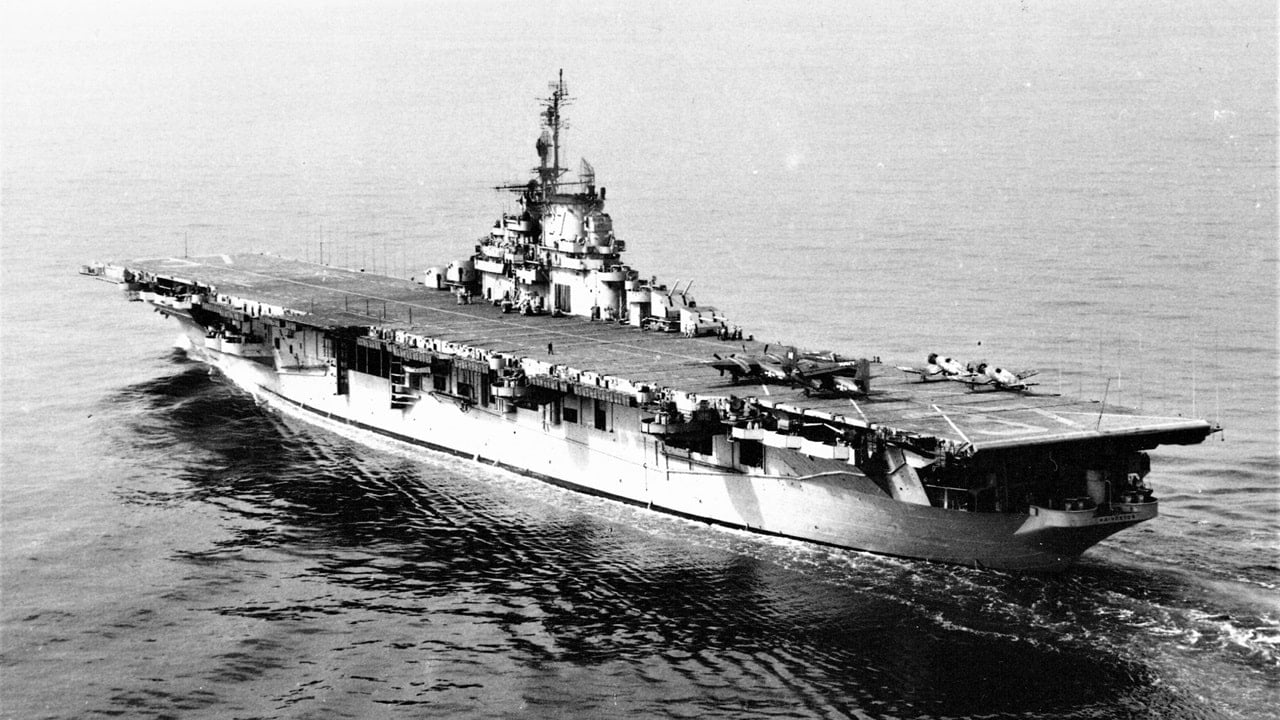The USS Essex Was a Special U.S. Navy Aircraft Carrier

Summary: The USS Essex (CV-9), the lead ship of its class, was a key U.S. Navy aircraft carrier during World War II and the Korean War.

-Commissioned in 1942, it participated in major operations including the Battle of Iwo Jima and the Battle of Okinawa.
-Post-WWII, Essex underwent modernization and served in the Korean War and during the Cuban Missile Crisis.
-Despite its distinguished service and numerous awards, it was decommissioned in 1969 and scrapped in 1975, unlike its preserved sister ships.
USS Essex: The Pioneering Aircraft Carrier That Led Its Class
Today, four of the five preserved aircraft carriers formerly operated by the United States Navy and now maintained as floating museums were built and commissioned during the Second World War. Those four warships were all Essex -class carriers, and these include the USS Yorktown (CV-10), which is in Mount Pleasant, South Carolina; USS Intrepid (CV-11), in New York City; USS Hornet (CV-12), in Alameda, California; and USS Lexington (CV-16), in Corpus Christi, Texas.
Each remains a testament to the capabilities of the warships, the sailors who served on the flattops, and the men and women who built them. But often missing from the story is that of the USS Essex (CV-9), which sadly wasn't saved from scrappers.
Meet the USS Essex
The lead vessel of a new class of U.S. Navy aircraft carriers was laid down on April 28, 1941, in Newport News, and sponsored by Artemus L. Gates, wife of the Assistant Secretary of the Navy for Air. She (the carrier, not Mrs. Gates) was commissioned on December 31, 1942. After completing sea trials and a shakedown cruise, the warship was deployed to the Pacific in May 1943 – becoming flagship of Task Force 14. The carrier took part in the liberation of Wake Island in October of that year, and just a month later – as the lead ship of Task Force 50.3 – was used in the U.S. Navy's attack on the Gilbert Islands, and supported the amphibious landings at Tarawa.
During the Second World War, CV-9 underwent only a single overhaul and returned to action with Task Force 58, where the USS Essex was among the carriers to provide air support during the Battle of Iwo Jima, and then again in the Battle of Okinawa. In the final days of the war, the carrier participated in some of the very final raids against the Japanese home islands.
Almost immediately after the end of the hostilities, the USS Essex was ordered back to Bremerton, Washington, and placed out of commission in the reserve fleet in January 1947. However, CV-9 was among the ships of the class to see substantial modernization, which included a new flight deck, and a streamlined island superstructure. She was reclassified as an attack aircraft carrier (CVA-9).
The USS Essex was also among the U.S. Navy carriers to see service during the Korean War, serving as the flagship for Carrier Division 1 and Task Force 77. CV-9 was also the very first flattop to launch the U.S. Navy's F2H Banshee twin-jet fighters on combat missions – however, it was in September 1951 that a returned Banshee that was damaged during its sortie crashed into other aircraft on the flight deck, killing seven.

The Final Years of CV-9
In 1955, the USS Essex was again upgraded, receiving an angled flight deck. Later she was converted into an anti-submarine warfare support aircraft carrier (CVS-9). Deployed around the world in the final years of her service, the carrier participated in the naval blockade of Cuba during the 1962 Cuban Missile Crisis and then served as the prime recovery vessel for the Apollo 7 space mission.
The carrier was decommissioned a final time on June 30, 1969, at the Boston Yard. For service in two wars, USS Essex received a Presidential Unit Citation, and 17 battle stars – 13 for World War II and four more for Korea – while for her service in the latter war, she also was awarded the Navy Unit Commendation.

In 1975, the USS Essex was sold for scrap – an unfitting ending for the historic warship and other U.S. Navy carriers. It remains unclear why there were greater efforts to see the historic ship preserved as a museum, but fortunately, four other vessels of the class were saved and remain a reminder of the greatness that was the Essex-class.
Author Experience and Expertise: Peter Suciu
Peter Suciu is a Michigan-based writer. He has contributed to more than four dozen magazines, newspapers, and websites with over 3,200 published pieces over a twenty-year career in journalism. He regularly writes about military hardware, firearms history, cybersecurity, politics, and international affairs. Peter is also a Contributing Writer for Forbes and Clearance Jobs. You can follow him on Twitter: @PeterSuciu. You can email the author: Editor@nationalinterest.org.
All images are Creative Commons.
